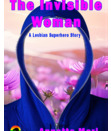Terramation
The other day, I was tucked away in our tiny bedroom working on the final edits for The Invisible Woman when my wife came bounding into the room and declared, I don’t want cremation when I die, I want terramation. I’m not putting her words in quotes, because I don’t know exactly what she said, except that she had a different view now of what happens to her when she dies. You see, she was either listening to a YouTube video or reading an article about terramation and thought that was the perfect answer for when she dies. Now, I gotta admit that talking about her wishes, especially when she proudly says you can use my composted body for your tomato plants, kinda creeped me out. But like a good wife, of course, I’ll respect her wishes, and my response back was that I would research this and write a blog about it. By now, you’ve probably guessed that terramation is human composting. And, yup, it’s a viable choice for many and becoming increasingly popular. So, here’s what I learned:
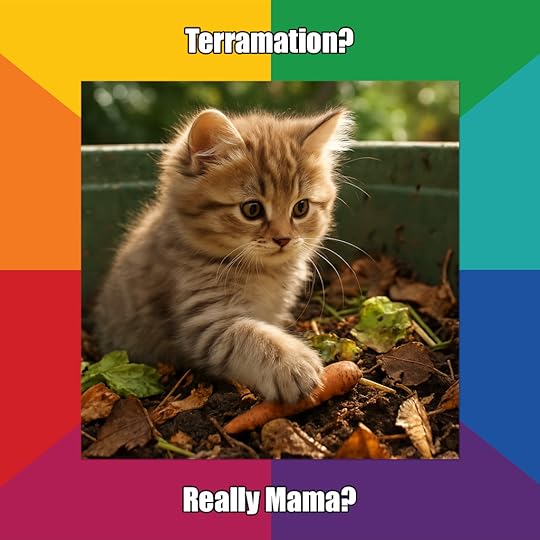 The for-profit death industry really got going after the Civil War with fancy, elaborate funerals, along with expensive caskets, etc. Due to the expense, cremations became increasingly popular and outnumbered traditional burials by 2015. Then cremations came under scrutiny as a result of the concern surrounding the use of fossil fuels in the cremation process, especially due to the toxic emissions, such as mercury from dental amalgams. Enter stage left, terramation.Washington State (my home) was the first state to legalize terramation in 2019, and the law took effect in May 2020. Now there are 13 states with laws legalizing the Earth Funeral (another name for terramation). For those who might be interested, the following states are: Washington, Colorado, Oregon, Vermont, California, New York, Nevada, Arizona, Delaware, Maryland, Minnesota, Maine, and Georgia. I gotta admit, I didn’t expect Georgia to be on the list. Seems more like a blue state thing. For those across the pond or my beloved neighbors to the north, Canada, Germany, the Netherlands, France, and the UK have taken an interest and are in the preliminary stages of research to potentially make this an option.It’s no wonder that this craze started in my state, because Katrina Spade, the founder of a company called Recompose, is like the mother of terramation with her research on ways to accelerate the process of human composting. At first, she tried those methods on livestock, and that process was part of a scientific study at Washington State University.It seems like the cost for terramation is comparable to cremation and will run a person about 5-7K.Not everyone can be terramated, though. Here are the limitations: Persons with certain diseases (such as TB, Creutzfeldt-Jakob disease, and ebola) can’t choose terramation because certain pathogens may survive the composting process; like cremation inorganic material such as implants with batteries (pacemakers) or radioactive materials (brachytherapy seeds) have to be handled with care; bone fragments may also need to be smashed in the middle of composting; metals from orthopedic surgery implants have to be removed prior to composting; in my state, Washington, there is a requirement to test for levels of toxins (arsenic, cadmium, lead, mercury, selenium) as well as fecal coliform and salmonella; Colorado prohibits growing food with human composting (good thing we don’t live in Colorado or I wouldn’t be able to use my wife’s remains on my tomato plants), and California doesn’t allow a person to scatter human compost in specific areas.For the science geeks out there, here’s how they compost a human body: Composting organisms require carbon, nitrogen, oxygen, and water. Your beloved’s dead body is placed in a container along with composting plant material (woodchips, straw, and alfalfa). Then, just like with regular composting, the mixture is aerated and rotated to increase the temperature, allowing thermophilic microbes to decompose the mixture.
The for-profit death industry really got going after the Civil War with fancy, elaborate funerals, along with expensive caskets, etc. Due to the expense, cremations became increasingly popular and outnumbered traditional burials by 2015. Then cremations came under scrutiny as a result of the concern surrounding the use of fossil fuels in the cremation process, especially due to the toxic emissions, such as mercury from dental amalgams. Enter stage left, terramation.Washington State (my home) was the first state to legalize terramation in 2019, and the law took effect in May 2020. Now there are 13 states with laws legalizing the Earth Funeral (another name for terramation). For those who might be interested, the following states are: Washington, Colorado, Oregon, Vermont, California, New York, Nevada, Arizona, Delaware, Maryland, Minnesota, Maine, and Georgia. I gotta admit, I didn’t expect Georgia to be on the list. Seems more like a blue state thing. For those across the pond or my beloved neighbors to the north, Canada, Germany, the Netherlands, France, and the UK have taken an interest and are in the preliminary stages of research to potentially make this an option.It’s no wonder that this craze started in my state, because Katrina Spade, the founder of a company called Recompose, is like the mother of terramation with her research on ways to accelerate the process of human composting. At first, she tried those methods on livestock, and that process was part of a scientific study at Washington State University.It seems like the cost for terramation is comparable to cremation and will run a person about 5-7K.Not everyone can be terramated, though. Here are the limitations: Persons with certain diseases (such as TB, Creutzfeldt-Jakob disease, and ebola) can’t choose terramation because certain pathogens may survive the composting process; like cremation inorganic material such as implants with batteries (pacemakers) or radioactive materials (brachytherapy seeds) have to be handled with care; bone fragments may also need to be smashed in the middle of composting; metals from orthopedic surgery implants have to be removed prior to composting; in my state, Washington, there is a requirement to test for levels of toxins (arsenic, cadmium, lead, mercury, selenium) as well as fecal coliform and salmonella; Colorado prohibits growing food with human composting (good thing we don’t live in Colorado or I wouldn’t be able to use my wife’s remains on my tomato plants), and California doesn’t allow a person to scatter human compost in specific areas.For the science geeks out there, here’s how they compost a human body: Composting organisms require carbon, nitrogen, oxygen, and water. Your beloved’s dead body is placed in a container along with composting plant material (woodchips, straw, and alfalfa). Then, just like with regular composting, the mixture is aerated and rotated to increase the temperature, allowing thermophilic microbes to decompose the mixture.
So, there you have it, folks. Go green and consider terramation for your loved ones! I suspect the only way to weave this little nugget into a book is with a second-chance romance. Ugh…would that make is a dark sapphic romance? Certainly, I’ve written books where the main character’s wife or lover died at the beginning of the story, and she had to find a new love, but I never thought to include this…maybe in my time travel novel, I can weave this in. By the 26th century, terramation might be the prevalent death practice. On a lighter note, The Kitten Trap is now available in audiobook, and Dani Mors did an amazing job! She even added real meows; it’s precious.
The Kitten TrapClick the covers for purchase options
 Purchase Ebook
Purchase Ebook
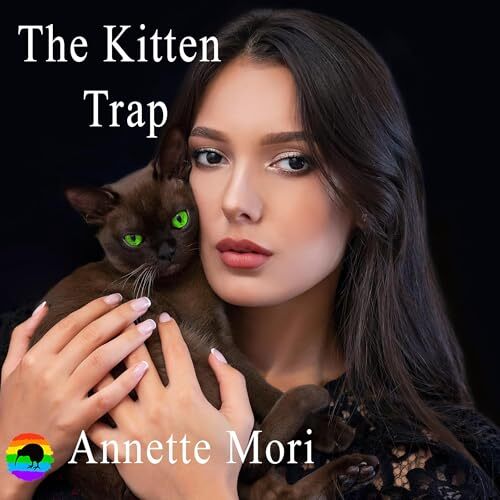 Purchase Audible
Purchase AudibleListen to Audio Clip Below
The Love DemandClick the covers for purchase links!
 Purchase Audible
Purchase Audible
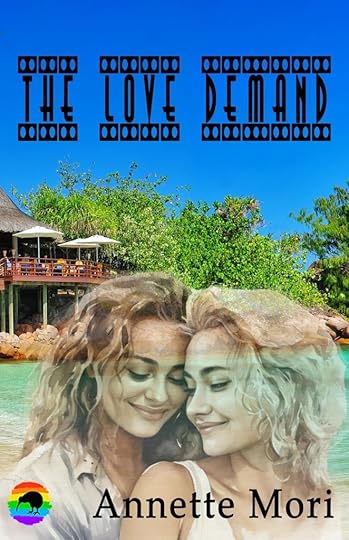 Purchase EbookPleasure Workers in Audio
Purchase EbookPleasure Workers in Audio
 Purchase AudibleLove Sins – The Final chapter in The Organization UniverseClick on Cover for purchase links and description
Purchase AudibleLove Sins – The Final chapter in The Organization UniverseClick on Cover for purchase links and description
 Purchase eBook
Purchase eBook
 Purchase AudibleThe Final Chapter in the original Organization series is now in Audible
Purchase AudibleThe Final Chapter in the original Organization series is now in Audible
 Purchase AudibleCatch up with Books 1 and 2 in The Next Generation Series
Purchase AudibleCatch up with Books 1 and 2 in The Next Generation Series
 Purchase EBook
Purchase EBook
 Purchase Audible
Purchase Audible
 Purchase EBook
Purchase EBook
 Purchase AudibleWhere it all began….Click on Covers for purchase links and descriptions
Purchase AudibleWhere it all began….Click on Covers for purchase links and descriptions
 Purchase Audible
Purchase Audible
 Purchase EBookClick on Covers for purchase links and descriptions
Purchase EBookClick on Covers for purchase links and descriptions
 Purchase EBook
Purchase EBook
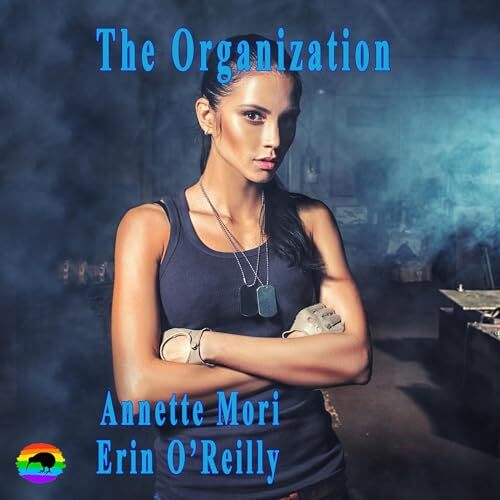 Purchase AudibleBooks in Audible
Purchase AudibleBooks in Audible Books In Kindle Unlimited (KU)
Books In Kindle Unlimited (KU)

Proud to be an Affinity Rainbow Publications author!

